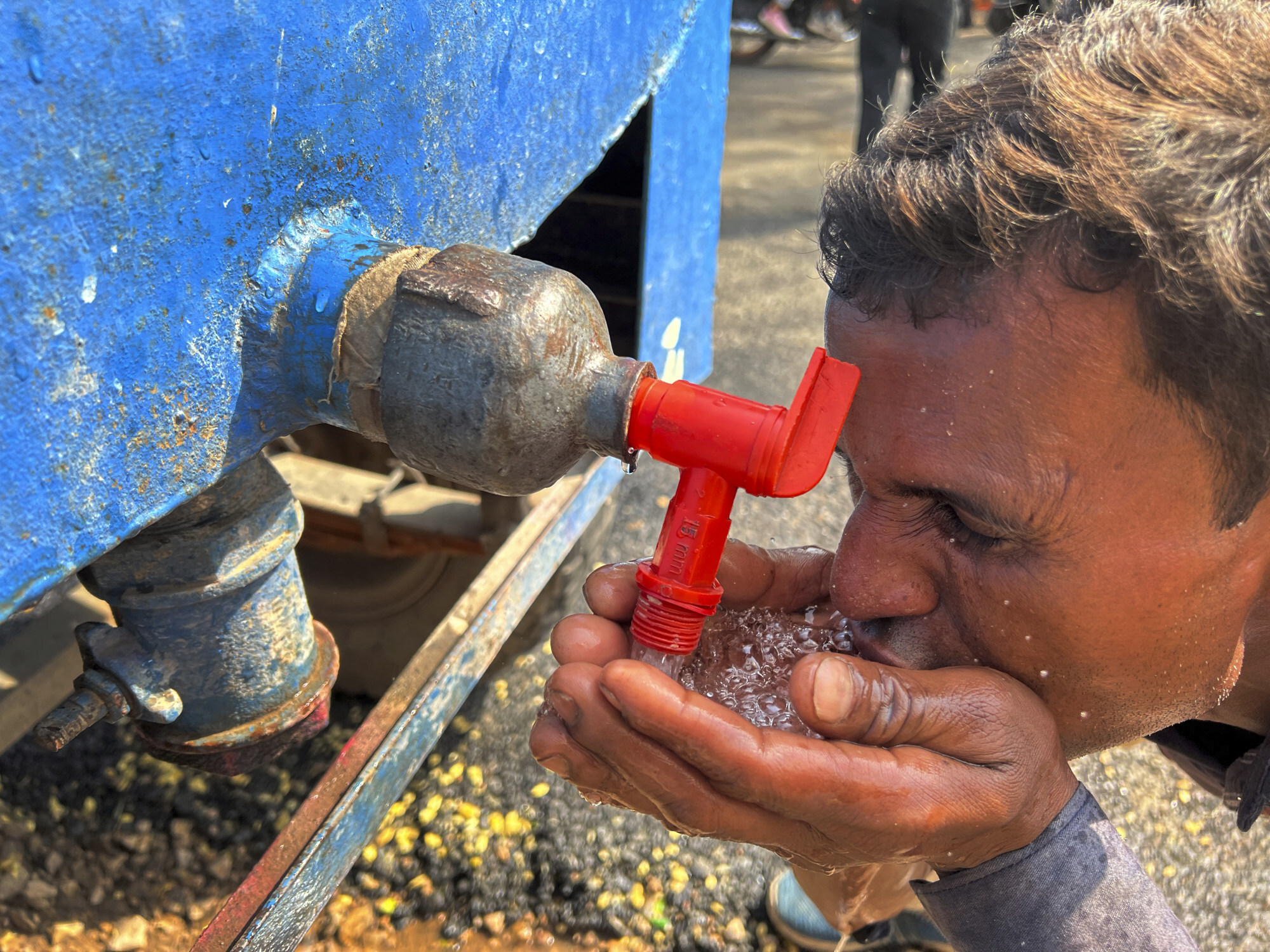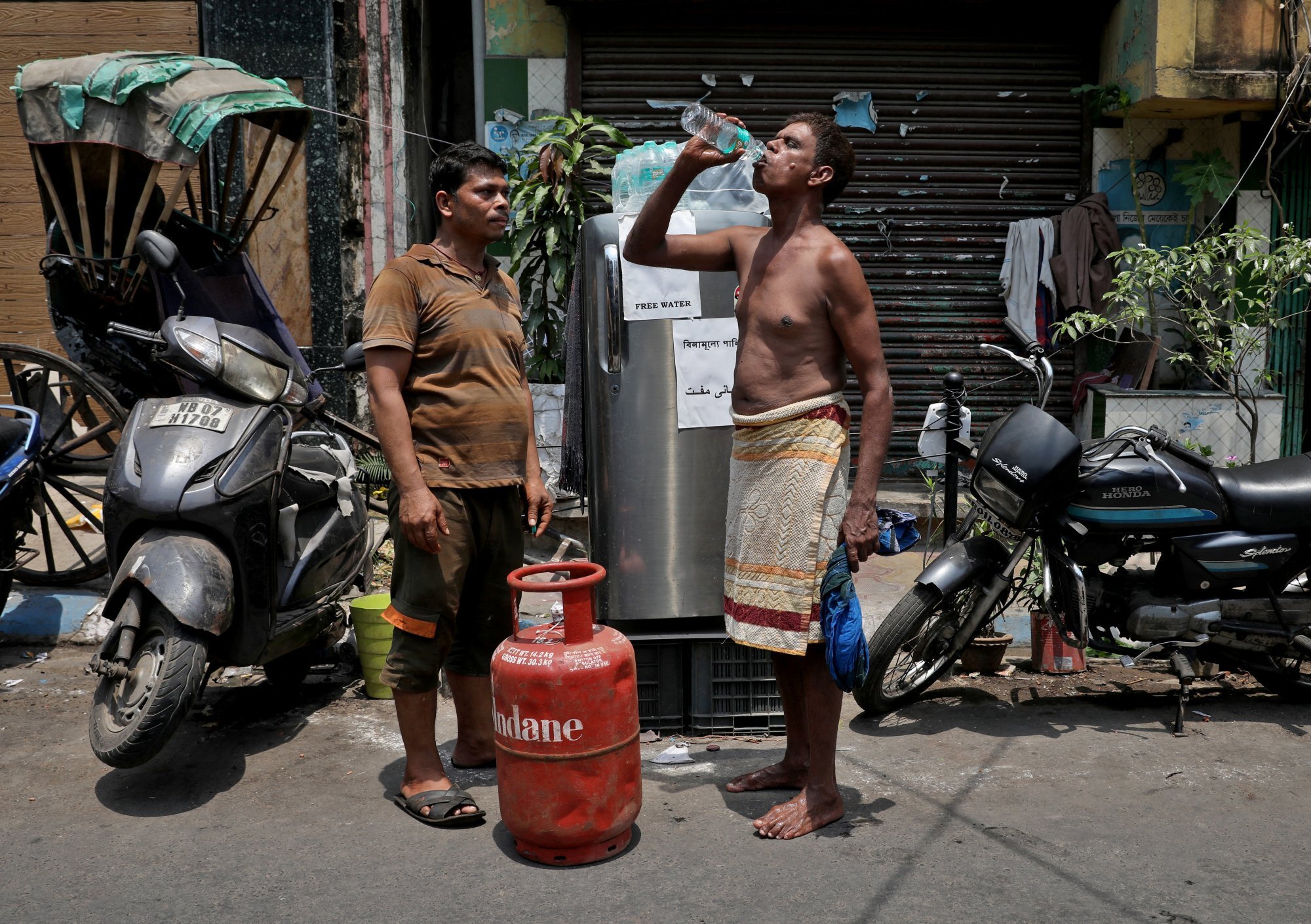
India burns as temperatures top 44 degrees Celsius amid extreme heatwave
- The extreme heat has swept across large areas of South Asia this week, and follows India’s hottest March in 122 years
- Indian Prime Minister Narendra Modi warned temperatures were ‘rising rapidly’ and ‘much earlier than usual’ – sending the risk of fires soaring
“Temperatures are rising rapidly in the country, and rising much earlier than usual,” Modi told heads of India’s state governments in an online conference.

More than a billion people are at risk of heat-related health effects, scientists said. In the capital New Delhi, temperatures have soared past 40 degrees Celsius (104 degrees Fahrenheit) for several days and are forecast to linger around 44 degrees until Sunday, with peak summer heat still to come before cooling monsoon rains arrive in June.
“We are seeing increasing incidents of fires in various places – in jungles, important buildings and in hospitals – in the past few days,” Modi said.
Indian capital engulfed in smoke after landfill catches fire
He asked states to conduct fire-safety audits for hospitals. Dozens of people die every year in fires at Indian hospitals and factories, mainly because of illegal construction and lax safety standards.
Fires in Delhi’s garbage dumps also contribute to the toxic air in the world’s most polluted capital.
As Modi spoke on Wednesday, firefighters were struggling to extinguish a blaze at the Bhalswa landfill site, a hillock rising above the northwestern edge of the city. Fumes from the burning waste forced a nearby school to close on Tuesday.
The cause of the fire was under investigation.

Among the worst hit have been the typically humid eastern Indian states, which saw temperatures above 43 degrees on Wednesday.
“Rarely it happens that nearly the whole country … is reeling under a heatwave,” said hydroclimatologist Arpita Mondal at the Indian Institute of Technology Bombay, on the coast of Maharashtra, where she said the heat was “unbearable”. Temperatures in Mumbai hit 37 degrees on Wednesday.
Climate change is “beyond doubt” a contributing factor to the weather extremes, Mondal said.

Mondal’s research has found that urban pollution may also play a role, with black carbon and dust absorbing sunlight and leading to greater heating in India’s cities.
While heat risks lives and livelihoods in India, the real danger comes when high temperatures mix with high humidity, making it difficult for people to cool down through sweating.
Such conditions are measured by “wet bulb temperatures” which record the reading of a thermometer wrapped in a wet cloth. High wet bulb temperatures are of particular concern in India, where most of the country’s 1.4 billion people live in rural areas without access to air conditioners or cooling stations.
On Wednesday, cities in southern West Bengal and coastal Odisha saw wet-bulb temperatures of around 29 degrees. Humans can survive only a few hours outdoors if wet-bulb temperatures exceed 35 degrees.
The meteorological department warned that conditions were likely to get worse in the next four days.

